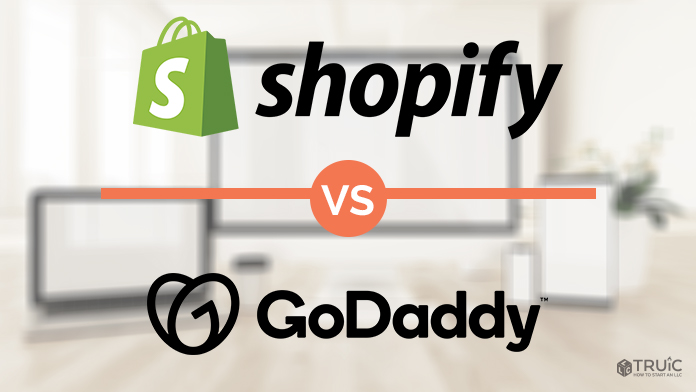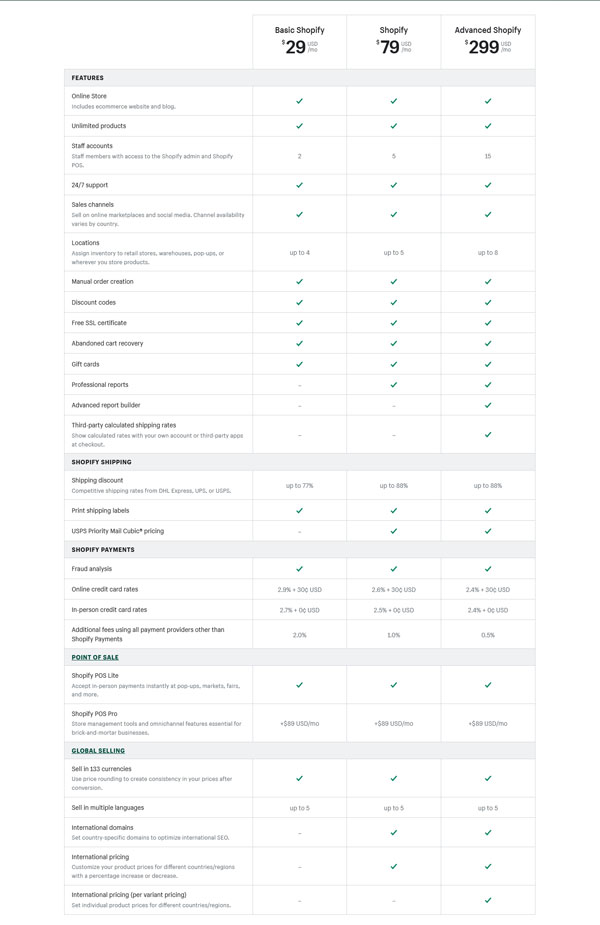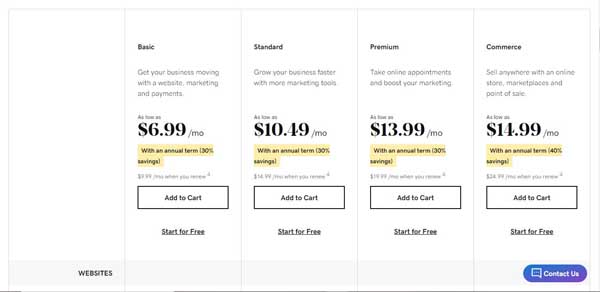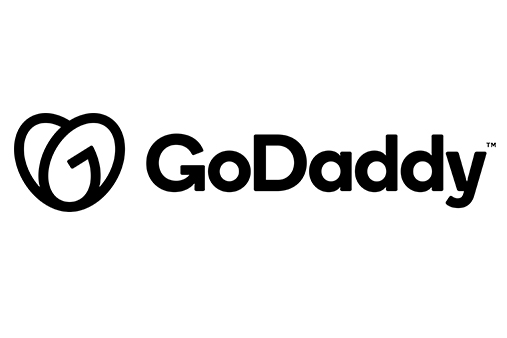Shopify vs. GoDaddy: Which Should You Use in 2025?
When getting your own online store up and running, there are several things to take into account. The first step is choosing a website builder to host your store. Factoring in a website builder’s ecommerce capabilities, ease of use, as well as any extra add-ons is important to the growth of your brand.
Both Shopify and GoDaddy have amazing options and capabilities and, depending on your needs, the results for which is best differs. This review provides side-by-side comparisons, as well as the pros and cons of Shopify and GoDaddy, to help you pick the right fit.
Recommended: Be sure to check out our Best Website Builder Review to find the right for your business.

Shopify vs GoDaddy Review
Having a website for you small business has become a necessity and helps your company get noticed by potential customers. We looked at GoDaddy vs Shopify and compared their ease of use, pricing, pros and cons and more so you can choose the right fit for your small business.
Shopify
Ease of Use
As the go-to website builder for many ecommerce and local businesses, Shopify can have your business website up and running in just a few hours. It offers a 14-day free trial to help you start building your website without any pressure to choose a plan first. To get started you just need to enter some basic contact and business information. It will then send you a verification email, which you can use to log in and start building your site.
Your Shopify dashboard will have everything you need to build out and maintain your website. You can add your own domain if you already have one, purchase one from Shopify, or if you’re not ready for that step just yet, it can always assign you a free domain for now.
Creating and adding products is as simple as clicking on the appropriate section in your Shopify dashboard. This handy feature is full of intuitive menus, forms, and customization options to make it easy to manage your business as it grows. The only downside to all of this is that you must constantly save your work. Forgetting this step will risk losing hours of valuable effort.
For a detailed look at how to best set up your Shopify, check out our handy guide here.
Pricing
Shopify has three main pricing tiers. Each has basic features for order management as well as inventory tracking and point-of-sale capabilities.

See which pricing tier fits you and your online store best with our Shopify Pricing and Plans article.
Pros
- Shopify is a complete ecommerce platform, offering metrics to track business, ways to manage inventory from multiple locations, and the ability to accept global currencies.
- With dozens of themes to choose from, the right one is at your fingertips, with built-in desktop and mobile capacity.
- Shopify offers hundreds of apps and plug-ins, and many are free or low-cost.
- Its point of sale (POS) systems allow for trouble-free transactions anywhere, and its unlimited storage space allows your brand to grow freely.
Cons
- Its lack of an autosave feature can cause headaches and heartbreak when setting up your site.
- Even those low-cost recurring app fees can add up quickly if not included in your budget.
- Unless you use Shopify Pay, it will take a percentage fee from all transactions.
Ecommerce
Since Shopify is set up to be the ecommerce platform of your dreams, it has several ways to make your site a seamless shopping experience. You can customize each product offering, create and add products simply with a click of your mouse, and offer search tags to make it easier for customers to find what they’re looking for. There are easy ways for you to connect any business card or accounts you may have to your site. You can accept PayPal payments, mobile payments, and major credit cards, as well as set up customer accounts. Shopify makes it easy to add any and all of these features to your site, ensuring customers feel safe using your store and that you get your money quickly. There’s even a way to add a “tipping” feature to your site if that’s part of your business model.
Shopify really breaks away from the competition with what it offers users in regards to shipping. Not only can you offer local delivery for nearby customers, but Shopify also passes on astounding shipping discounts to its users. Plus, you can always place a test order to get the full feel of what your customer experience will be like, helping you to improve every aspect of your business’s Shopify site.
Templates and Themes
Shopify has a Theme Library where you can peruse paid and free templates. There’s even a feature for you to upload your own theme to your site. Customizing your template is very user-friendly, but there are a lot of steps, adding time to this process. The Shopify Dashboard makes it easy to adjust the background color, font size, and style. Just remember to hit that “save” button after every change you make!
On top of having a “save” button, there are also handy “undo” and “redo” features, allowing you to tinker with different options as you build your site. Again, you must remember to save after every change you want to keep.
Apps and Plugins
The Shopify App Store has over 1000 applications you can add to your site. These apps range from free, limited-feature lite, and premium— each with different price points. Some require a one-time purchase and others are on a recurring subscription basis, so be sure to double check your budget before snagging one. Most apps will offer a free trial, allowing you to try it before you decide if it should be on your site forever. Some of the apps will have you make yet another account with a third party— this can feel a bit repetitive and tedious if you need a lot of extra add-ons.
See what Shopify can do for your ecommerce store. Sign up for a Shopify free trial today.
GoDaddy
Ease of Use
GoDaddy also asks you to answer a set of questions to find the template that most suits your needs. It streamlines the process a bit compared to Shopify, in that as soon as you finish the survey you can get started on building out your site. No need to wait for a confirmation email. And with GoDaddy, you can have your site up and running in a matter of minutes.
GoDaddy has worked hard to make setting up your website as effortless as possible. Once you’ve chosen your template, a simple drag-and-drop functionality allows you to quickly set up your site. Placing or adding content is as easy as clicking on what you’d like and putting it where you want.
The only issue with the GoDaddy website builder tool is that its simplicity can get in the way of absolute user control. It is generally easy to place things where you want, but some of the finer points may not be available. No matter what, your site will still look professional on any device.
For a more in-depth look at how to set up your GoDaddy site, check out our instructional guide here.
Pricing
On top of offering a free plan, GoDaddy has four paid plan options: Basic, Standard, Premium, and Ecommerce. All GoDaddy plans offer incredible value at competitive price points.

Find the plan to fit your needs with our GoDaddy Pricing and Plans guide.
Pros
- GoDaddy is incredibly easy to use for any skill or experience level. You can have a working website up in fewer than five minutes.
- Powerful search engine optimization, marketing tools, and social media strategies are offered with many GoDaddy plans.
- The GoDaddy Ecommerce Plan is a complete package without the hassle of expensive add-ons.
- GoDaddy offers some of the lowest rates for transaction fees.
Cons
- The lack of complete design control can feel frustrating to some.
- GoDaddy doesn’t pass along significant deals on shipping costs to its users and its ecommerce capacity may feel limited for larger shops or retailers with brick-and-mortar stores.
Ecommerce
The GoDaddy Ecommerce Plan is the only plan it offers with ecommerce capabilities. It includes very sturdy and versatile basics like product listings, flexible payment options like PayPal , Apple Pay, and Google Pay, and offers some of the lowest transaction fees. You can sync your orders and inventory to larger marketplaces like Amazon and eBay. Adding discounts and promotions is as easy as a click of a button. It also offers curbside pick-up options and ways to add shipping fees. Unfortunately, GoDaddy doesn’t do as good of a job passing along savings to you in this realm, and its ecommerce functions will seem limited in comparison to Shopify’s prestige.
Before signing up for a plan, GoDaddy lets you set up and test ecommerce features for free. This allows you time to perfect your site and make sure it’s a good fit for you. Everything will be fully operational when you’re ready for a GoDaddy Ecommerce Plan.
Templates and Themes
The GoDaddy website builder tool makes adjusting the layout, theme, and content of your site quick and painless. The true drag-and-drop functionality allows you to alter any text, pages, or content with just the click of your mouse.
However, there are some font sizes and headings that you cannot edit, making you feel a bit confined at times. There’s also no “undo” button, meaning if you accidentally delete something you spent time working on, there’s no quick way to get it back. Read our GoDaddy review to see how easy it is to get your site up and running.
Apps and Plugins
GoDaddy has done an excellent job of keeping everything under just one roof. GoDaddy does not offer apps or plugins, since it has most anything a small business owner would need already built into the platform. This means no frustrating third parties or subscription fees to deal with.
GoDaddy offers what it refers to as sections; tools you can add to any of your pages to enhance your features. There are sections for restaurants to offer menus, ecommerce stores to offer price lists and descriptions, and even ways to upload video and audio tracks. These are all intuitive and easy to connect to your site.
Our Pick for Best Website Builder: GoDaddy
GoDaddy makes it a breeze to get your business site up and running with its streamlined and simple layouts. Its competitive pricing and inclusive features make GoDaddy our choice for the overall best website builder. Especially if you are just starting out or operating a smaller business, GoDaddy has flexible pricing plans and intuitive features to make you feel like an experienced website designer, regardless of your experience.
However, it should be noted that if your online store is the sole function of your site, and you have more than 5 to 10 stock keeping units (SKUs), then Shopify is the winner for you. We will explain this further in the ecommerce section of this article.
Get Started With GoDaddy
Start building your website today with GoDaddy. It’s quick to sign up, follow the link below to start for free.


